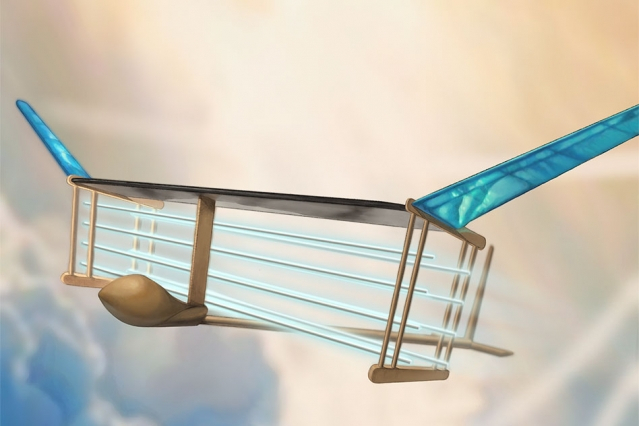
A group of engineers at the Massachusetts Institute of Technology (MIT) said that they have created and tested the world's first aeroplane that has no moving parts. Even though it may sound impossible, the research team claimed that this amazing aircraft doesn't need fossil fuel to fly.
In the study, which was published in the journal Nature on Wednesday, the team stated that this aeroplane is a milestone in the "ionic wind" technology. They also believe that their invention will widen the way for quieter and environmentally cleaner aircraft in near future.
As per the research centre, the associate professor of aeronautics and astronautics at MIT, Steven Barrett said that this is the first aircraft that has no moving parts in its propulsion system and this creation "has potentially opened new and unexplored possibilities for aircraft which are quieter, mechanically simpler, and do not emit combustion emissions."
The first airplane was launched almost 150 years ago by the great Wright brothers and it was also the first man made the flight. After the revolutionary invention, day after day the aviation industry has introduced modern parts, which are now very essential parts of a flight such as propellers or turbines to move forward through the air with more power.
But the MIT researchers have built an extraordinary, never seen before airplane that has an onboard battery pack in the fuselage to supply 20,000 volts of electricity to an array of wires, attached to the width of the plane under the wing. They also said that to generate enough thrust to sustain the flight, the electric field let the nitrogen ions flow from the wires to rods at the back of the plane that is enough to create sustainable thrust.
It is a lightweight airplane with almost five pounds with a five-meter wingspan. When the team tested the plane inside a gym, they succeeded. They flew the plane at a distance of 60 meters, a feat that was repeated 10 times.
The lead author of this revolutionary project Barrett said that this idea came from the TV series "Star Trek." He added that during his childhood he observed how the shuttle moves silently without attaching any moving parts and his childish dream to look for something similar finally led him towards the concept of ionic wind.
Barrett told MIT News, "This was the simplest possible plane we could design that could prove the concept that an ion plane could fly. It's still some way away from an aircraft that could perform the useful mission. It needs to be more efficient, fly for longer, and fly outside."









